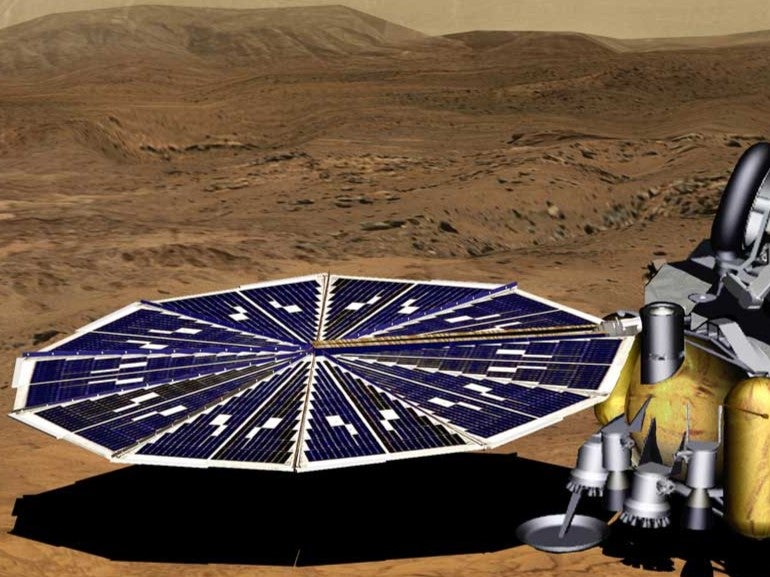Solar panel discovery paves way for exploration of distant planets

Scientists have discovered how to build radiation-tolerant solar panels that could be used for space-based installations and solar-powered spacecraft.
A team from the University of Cambridge proposed an ultra-thin photovoltaic cell design that can tolerate irradiation in space that causes damage and lowers efficiency of conventional solar cell materials.
This means it would be possible to deploy them in higher orbits around the Earth, such as the Molniya orbit that passes through the centre of our planet’s proton radiation belt.
Middle Earth orbits are becoming increasingly necessary for satellites due to how cluttered low Earth orbits have become in recent years.
Other applications include space exploration in severe radiation environments, such as Jupiter’s moon Europa. In order to land a solar-powered spacecraft on the surface of Europa, radiation-tolerant solar panels need to be developed.
Two types of photovoltaic devices were built: one using an on-chip design; the other using a mirrored back to boost light absorption.
The scientists tested the solar cells by bombarding them with protons generated at the Dalton Cumbrian Nuclear facility, which allowed them to mimic the effects of radiation in space.
“Our ultra-thin solar cell outperforms the previously studied, thicker devices for proton radiation above a certain threshold,” said Dr Armin Barthel, who led the research.
“The ultra-thin geometries offer favourable performance by two orders of magnitude relative to previous observations.”
The scientists claim the ultra-thin photovoltaic cells will also lead to a lighter load and significant reductions to launch costs.
A paper detailing the research, titled ‘Radiation effects in ultra-thin GaAs solar cells’, was published in Journal of Applied Physics on Tuesday.
Subscribe to Independent Premium to bookmark this article
Want to bookmark your favourite articles and stories to read or reference later? Start your Independent Premium subscription today.

Join our commenting forum
Join thought-provoking conversations, follow other Independent readers and see their replies